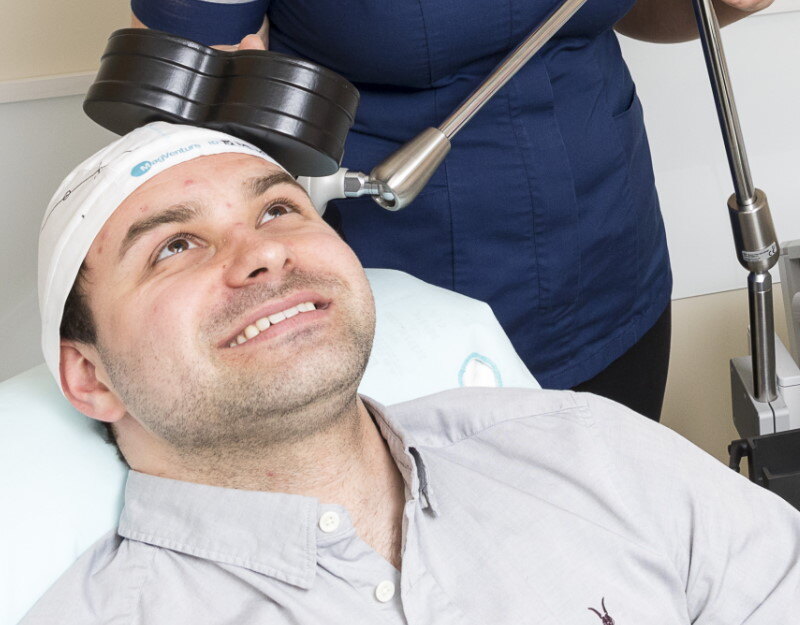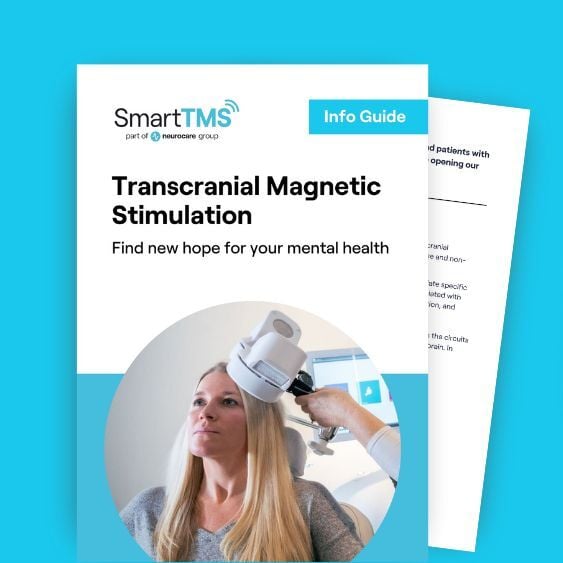EMDR and TMS Therapies for the Treatment of Post-Traumatic Stress Disorder (PTSD)
July 12, 2021 - Smart TMS

Which Intervention is Right for You?
Outside of traditional talk therapy and pharmacotherapy, EMDR could perhaps be seen as the flagship intervention for people with PTSD, as this population has been the primary target of this treatment since the 1980s. However, emerging research continues to demonstrate that TMS is a major player in the treatment of PTSD as well. But how do they work? What can you expect if you decide to pursue one of these treatments?
Both EMDR and TMS rely on the theory that repetitive mental processes make changes in the brain. The ways in which we interpret our experiences, thoughts, and observations can become habitual, and if we are constantly ruminating over a traumatic event, our stress pathways are going to become heightened, and the synapses that communicate this anxiety and fear can become overactive. Think of it this way; a drop of water hitting the ground once in a while makes the ground a bit wet, but it will dry. A drop of water hitting the ground consistently over a long stretch of time erodes the ground away. Your mind works in the same way; a bit of anxiety here and there with time to decompress between stressful events is tolerable, but persistent and intrusive anxiety, such as that caused by PTSD, can cause physiological changes in the brain.
EMDR therapy uses processes called exposure and cognition to help patients to “unpack” past trauma while in a state of distraction. The theory behind this is that remembering traumatic events while your attention is focussed on something else is less upsetting, and the more exposure you have to your problematic thoughts, the less disruptive they will be. It is a safe and effective treatment which assists patients in processing and integrating distressing memories, thus disconnecting from the anxiety and intrusive thoughts associated with these memories. Elements of CBT are incorporated into this treatment as your therapist will help you to identify unhelpful automatic thoughts and develop coping strategies to deescalate distress.

TMS uses magnetic pulses either to stimulate underactive brain areas or suppress over-active brain areas. In PTSD treatment, the target brain area is the right dorsolateral prefrontal cortex (RDLPFC); the area of the brain that shows increased activity in individuals who experience the depression and anxiety symptoms associated with PTSD. To stick with the water analogy, think of the stress response in the RDLPFC in a PTSD brain as a firehose flooding the brain pathways with intense and excessive anxiety and fear. In a non-PTSD brain, this is more like the tap in your kitchen; it gets turned on sometimes, but stress and fear occur in tolerable amounts that do not completely overwhelm the system. Thus, low intensity TMS treatment is used on the RDLPFC to turn that neurological firehose into a kitchen tap, putting the patient back in control of their stress response.
The average cost per session for both EMDR and TMS is generally £200 and both therapies are covered by many insurance companies. However, the structure of sessions differs quite substantially in that EMDR sessions to treat PTSD can last from 1 to 2 hours, while a TMS Treatment is generally 15-25 minutes long (depending on whether the patient has comorbid depression).
For EMDR, NICE guidelines recommend up to 12 sessions for a single incident, though this can be extended depending on the severity of the impact of the trauma, or if additional difficult past experiences present themselves during treatment. These sessions generally occur once or twice a week, or once every other week. It is important to keep in mind that EMDR involves unearthing and discussing painful memories, and this may be very difficult for some patients.
An average course of TMS treatment for PTSD is 30 sessions, though progress is reviewed after 10-15. In many cases TMS can be accelerated, and a patient can undergo up to 8 sessions in one day with breaks of 20-50 minutes in between. It is recommended that patients undergo at least 3 treatments weekly to optimise results.
Both EMDR and TMS are non-invasive and the patient is fully alert throughout, and both have a substantial evidence base supporting their efficacy. If you are experiencing symptoms of PTSD, reach out to your doctor to discuss weather EMDR or TMS may be right for you.
- Content written by Lindy our Edinburgh Practitioner
To find out if TMS could be right for you, why not try our suitability checker? https://www.smarttms.co.uk/tms-suitability/










